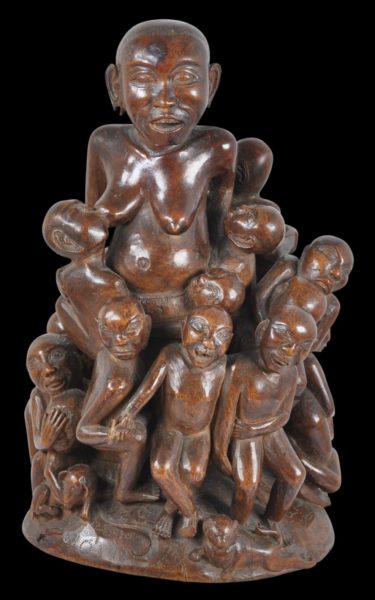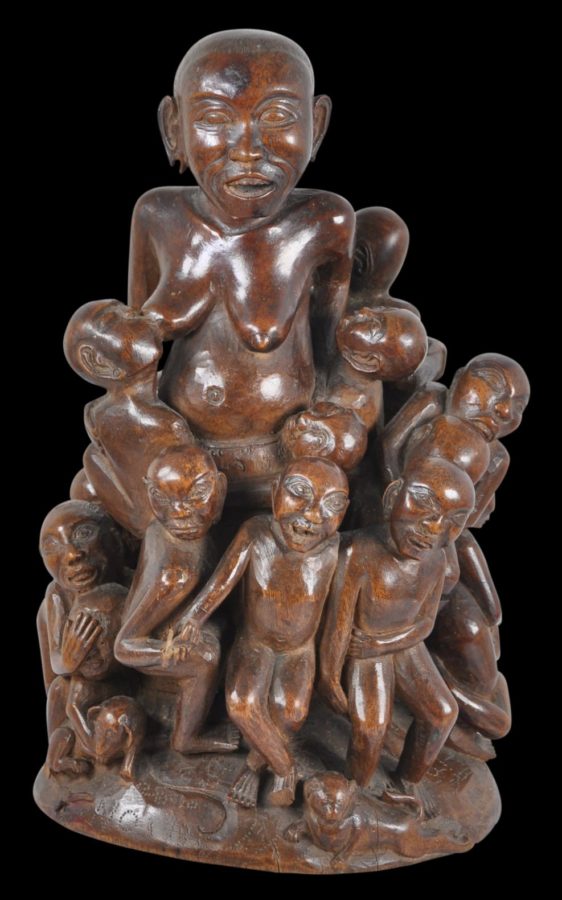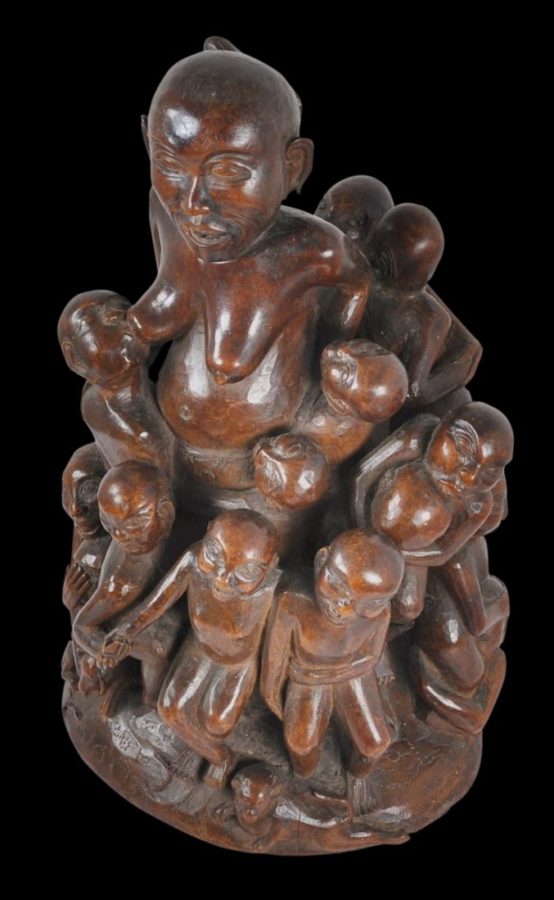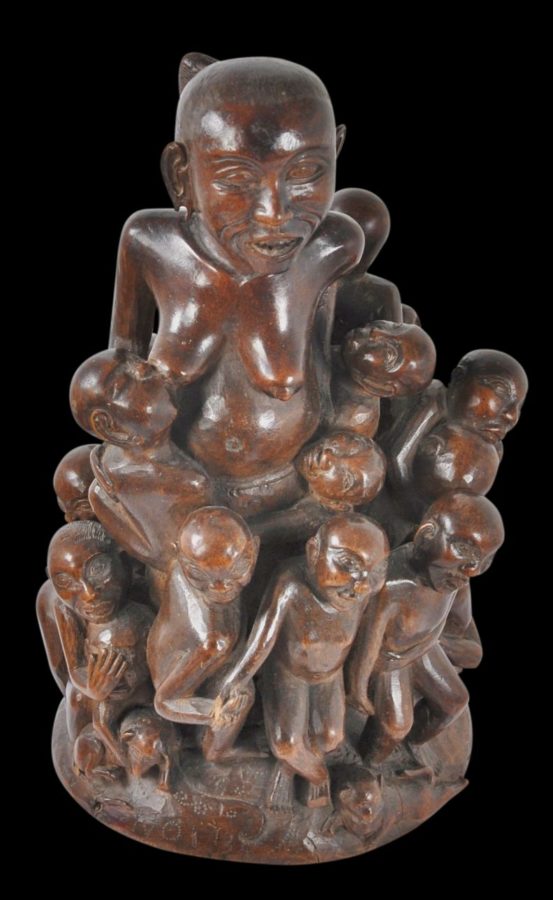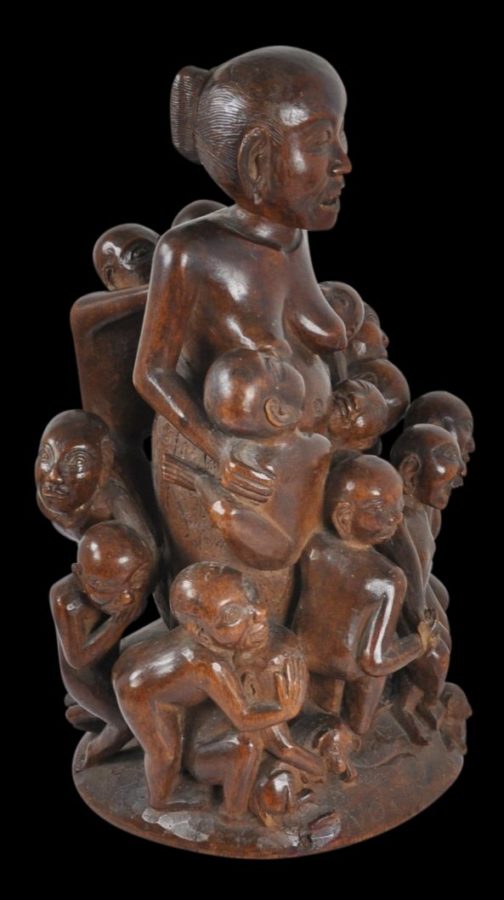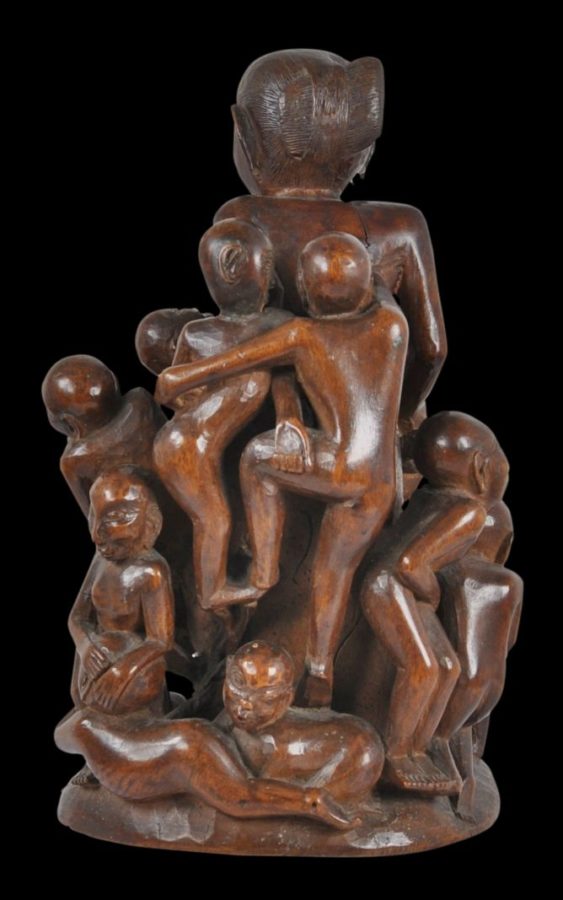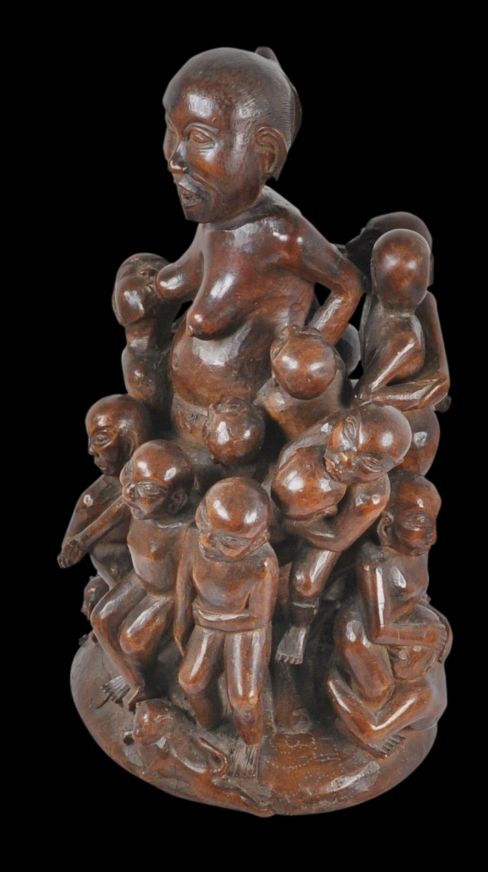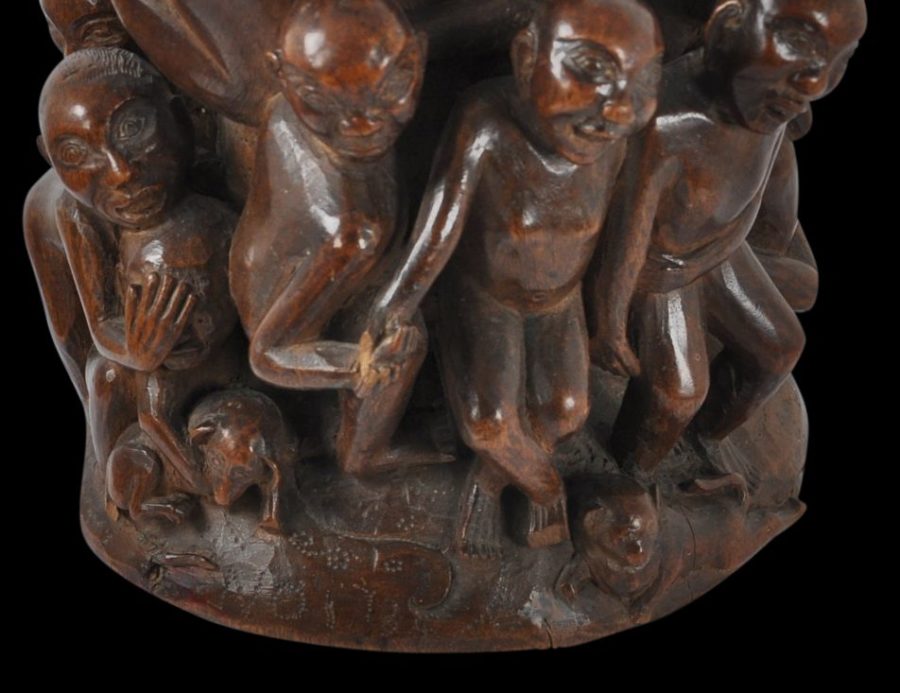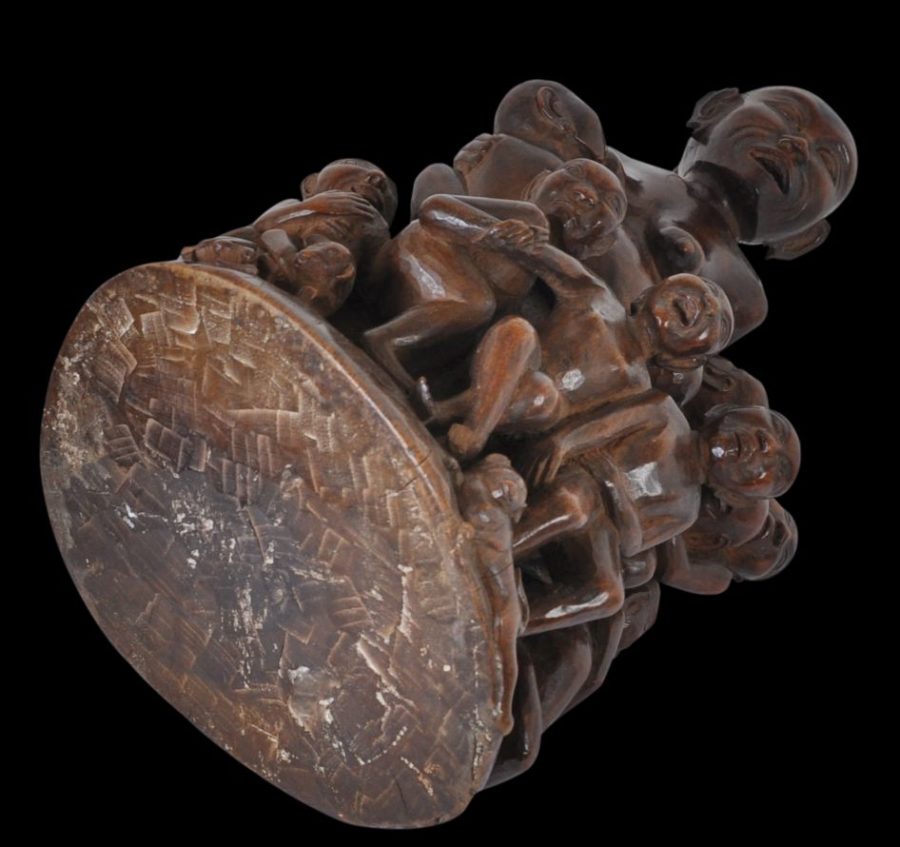This is among the best wooden carvings from the Indonesian island of Bali that date to the 1930s that we have seen. The carving is exceptional as is the composition. The topic also is notable.
The carving, from a single piece of dark wood polished to a high lustre, shows the central figure of Mother Brayut and her many children – there are no less than sixteen carved in this image. Mother Brayut was said to have once been the demoness Hariti who ate small children. She converted to Buddhism (despite Hinduism being the majority religion on Bali) and subsequently became a protector of children. Her name (in Balinese) means ‘bent over with many fruits’ – in this case, ‘fruits’ is a reference to her many children (Neka & Kam, 2008, p. 105).
Here she is shown somewhat harassed by her large brood. One suckles at one of her breasts, others clings to her waist, while others play with each other and with dogs (two dogs have been carved among the group as well.) She has a splendid coiffure, most evident from the back. Her hair is pulled tightly back and is wound around a large hidden haircomb in traditional Balinese fashion.
Bali has long been a destination for visitors. The numbers of visitors increased significantly in the 1920s and 1930s. The actor Charlie Chaplin visited in 1932 for example, as did many other celebrities around that time. Their presence along with that of expatriate artists who encouraged Balinese artists to develop items for ‘Western’ tastes helped to foster an early art industry in painting and sculpture aimed at the foreign market.
Our example is among the early examples of wood carving done purely for decoration and almost certainly for a Western visitor.
On the lower front right, the letters ‘N O I’ can be seen. This stands for ‘Nederlands Ost Indies.’ There are minor losses: the ear lobes of Mother Brayut were pierced by the wood carver and the tips of the lobes have not survived; a tail of one of the small dogs is missing; a foot of one of the sixteen children has lost its toes; and there is one minor, age-related (but stable) crack. Overall, however, these are minor losses generally lost in the overall exuberance of the piece. The surface of the wood has developed a fine lustrous patina.
References
Leidelmeijer, F., Art Deco Beelden van Bali (1930-1970): van Souvenir tot Kunstobject, UItgeverij Waanders, 2006.
Gaspard de Marvel, pers. comm., Switzerland.
Neka, S., & G. Kam, Neka Art Museum: The Heart of Art in Bali, Yayasan Dharma Seni, 2008.
Ramseyer, U., The Art and Culture of Bali, Oxford University Press, 1977.
Reichle, N. (ed.), Bali: Art, Ritual & Performance, Asian Art Museum, 2010.


